UPDATE
Officials have released the seven scenarios in play for relieving overcrowding in high schools across Baltimore County. Despite the fact that focus group feedback found that 58 percent of the participants wanted high schools to have enrollments of between 1,000 and 1,400, none of the seven scenarios includes that option for Towson-area non-magnet high schools.
And only one scenario has Towson High School at or below the enrollment limit recommended by the State Department of Education of 1,700 students. None of the scenarios have Dulaney at less than 1,984 students.
Neither Baltimore County Public Schools nor Sage Policy Group, which was contracted to conduct the focus groups and find solutions to high school overcrowding, responded to requests for comment. It is not clear if these are the only scenarios that will be considered going forward, or if the current public-input sessions and online survey will expand or decrease the options. The online survey does not have limits on how many times someone can take it, meaning one person could significantly skew the results by submitting an unlimited number of replies.
RELATED: Shortage of seats at Towson High worse than previously thought
The second of three July public-input sessions is being held in Towson tonight (July 12) at 7:00 PM at Carver High, 938 York Road.
July 8, 2018 School issues might not be top of mind for many people during the summer months, but it’s actually a critical time when it comes to providing feedback about how Baltimore County Public Schools should deal with its high-school overcrowding problems.
And one of the trickiest problems to solve is how to handle the huge overcrowding at Towson High, which sits on the smallest plot of land of any high school in the county. The students who are currently in Towson-area elementary and middle schools will likely be the most affected by whatever solution BCPS chooses.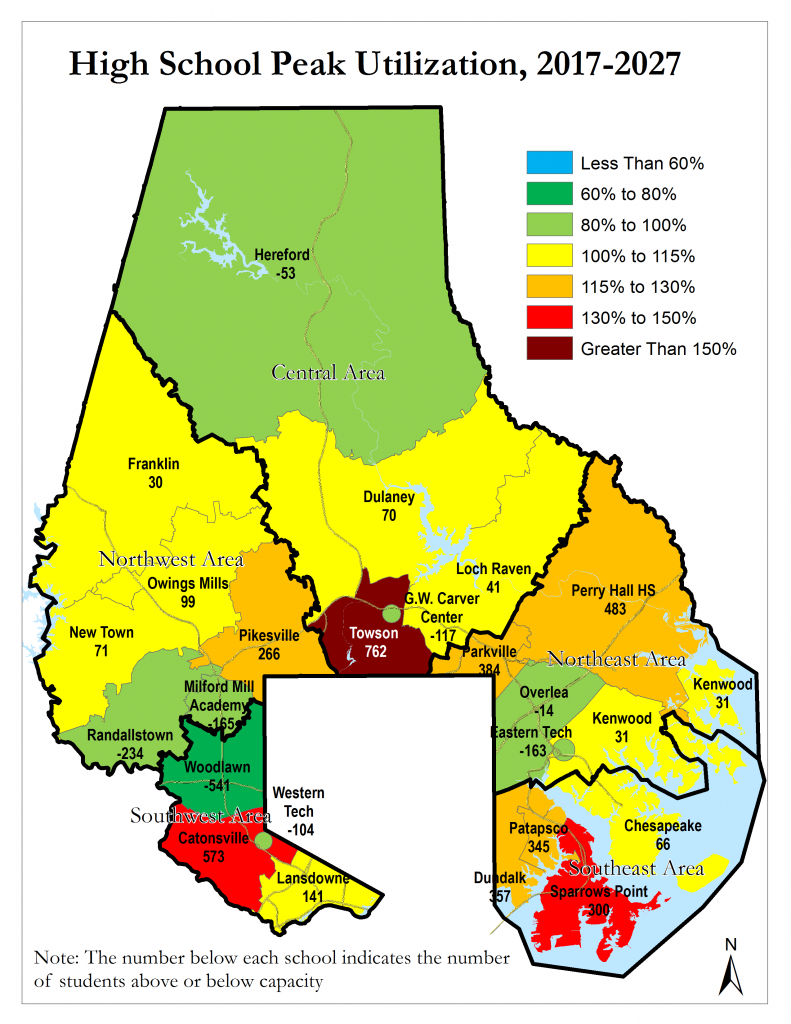 BCPS hired Sage Policy Group to come up with a plan to relieve overcrowding in high schools, and the firm has been holding focus groups to hear from community members. Additionally, there will be three public-input sessions this month:
BCPS hired Sage Policy Group to come up with a plan to relieve overcrowding in high schools, and the firm has been holding focus groups to hear from community members. Additionally, there will be three public-input sessions this month:
- July 9, 2018, Catonsville High School Cafeteria, 7 – 8 p.m.
- July 12, 2018, George Washington Carver High School Auditorium, 7 – 8 p.m.
- July 17, 2018, Dundalk High School Cafeteria, 7 – 8 p.m.
Additionally, BCPS will have an online survey — going live July 9 — in which people can submit feedback.
A “Students Count” report from BCPS says that Towson High is projected to have 2,022 students in the year 2026; that’s 306 more students than last year’s projections showed for the same year, and would put Towson at 159 percent capacity given its current building.
Towson has a state-rated capacity of 1,260 students and the current enrollment is about 1,550. BCPS documents show a new Towson High with a capacity of 1,860. And some parents in the community say even that would be too large, given that the high school sits on the smallest plot of land of any high school in the county.
“Towson High needs a complete re-do, whether a very extensive remodel or a new building is up to BCPS. We will leave the size decision and any redistricting to BCPS,” Steve Prumo, one of the leaders of the group New in ’22, which is advocating for a new Towson High, said after participating in a Sage Policy focus group in mid June.
Stoneleigh resident Phoebe Evans Letocha, whose kids are going into 9th and 11th grade at Towson High, also attended the focus group. She shared her thoughts on the focus group with other parents who are interested in/concerned about the process going forward.
Letocha’s notes are shared below with her permission.
Background
This was one of eight community focus groups, plus one focus group with BCPS principals being conducted. There were 10 community members in attendance at the June 19 focus group held at Loch Raven High school representing Towson, Dulaney, Parkville, Hereford, Perry Hall high schools. Eight white women and two white men. One woman was a teacher and parent, the rest were parents of high school-aged kids. The Towson High parents included Steve Prumo from New in ’22, and at least 1 other THS parent.
Focus group comments will be incorporated into a series of three gallery walk presentations and public information sessions being held between July 9-17 at Catonsville, Carver and Dundalk high schools where Sage and BCPS will be seeking feedback on various options. BCPS will also conduct an online survey from July 9-22 seeking feedback. All presentation documents will be posted online at http://www.bcps.org/system/high-school-capacity-study.html
Based on feedback from the July survey and information sessions, Sage and BCPS will revise their options and strategies in August and then conduct a second series of information sessions and online surveys in September. Sage will revise options and feedback in October and submit final report in November to the Board of Education. It will then be up to the new school board and BCPS leadership to act upon the report to start implementing recommendations for the school year beginning 2019 and beyond. Funding will need to be approved by the county and state. The people we elect in November will be making decisions about how to address the high school capacity needs.
Presentation
Anirban Basu of Sage Policy Group opened by stating that over the next 10 years (by 2027) BCPS will face a shortfall of 1,700 high school seats. In addition to needing 1,700 new high school seats, the BCPS system also has pockets of overcrowding and undercapacity in different high school areas, which could be redistributed to rebalance enrollment at these schools to better match their capacity. The purpose of the focus group was to get feedback to determine the most reasonable and least offensive solutions to the capacity problem. We were presented a series of questions to select our preference. We then had a discussion surrounding four potential options to solve the capacity problem.
The big questions are:
Where will the 1,700 new high school seats go?
How will BCPS address redistricting at the high school level?
How will BCPS pay for the high school capacity needs?
The assumption is that the high school capacity study is only looking at capacity and not the quality of the [facility] on the theory that first priority is that every student needs a seat and shared spaces at their schools, (gym, cafeteria, library, athletic fields, common spaces, etc).
In all four solutions the math worked to get 1,700 new seats but by different means. [You can see Basu’s power point here.]
We were not shown any projections of how much money each level of tax increase could generate for schools.
I asked whether developer impact fees would be considered as part of this study [and] we had a discussion of whether impact fees would bring in enough money to pay for the resulting impact on school capacity, streets, sewers and storm water management. Basu’s position is that impact fees drive up costs that get passed on to those purchasing new homes or higher rents, which would suppress new development, economic growth, and new tax revenue generated from development. Basu felt that more income could be generated from new tax revenue from growth than could be generated by impact fees. Baltimore County is one of the few Maryland jurisdictions that doesn’t impose impact fees.
Unanswered was what this policy of no impact fees would mean for capacity projections long term. The enrollment projections produced by Sage are based in part on building permits which can be used to project five years out but leave unknown what the building permits 10 years out will do to capacity projections as housing gets built and occupied. Another part of the enrollment projections is based on demographics of births in areas, which also are only known five years out of kindergarten. How much demographic turnover neighborhoods experience as older residents are replaced with new residents with school age kids also contribute to capacity issues in schools.
Question 2
The responses were mostly somewhat reluctant but understand the need, with two people hopeful it would take place. None of the participants were opposed to it. Basu said the other focus groups also said they understood the need to redistrict. This prompted a discussion about how reaction to redistricting depended upon which school your family would get moved to as no one wants to get moved to what they perceive to be a lesser-quality school. School size came up as a factor, with a reluctance to get moved to a larger school. The group raised questions about fairness of getting moved to another school district after having purchased a home for your original school district and whether people were aware of that risk of getting redistricted when they bought their homes.
Question 3 This prompted a discussion of the types of magnet programs, i.e. STEM, arts, college prep vs vocational. Many wanted to see more offerings for magnets in skilled trades and public/private industry partnerships. We discussed the impact of magnets on capacity when the magnet only schools are under capacity, in part because of attrition in programs not being back filled and principals of those schools preference for undercapacity enrollment so they have more space for programs that are more space intensive.
This prompted a discussion of the types of magnet programs, i.e. STEM, arts, college prep vs vocational. Many wanted to see more offerings for magnets in skilled trades and public/private industry partnerships. We discussed the impact of magnets on capacity when the magnet only schools are under capacity, in part because of attrition in programs not being back filled and principals of those schools preference for undercapacity enrollment so they have more space for programs that are more space intensive.
Question 4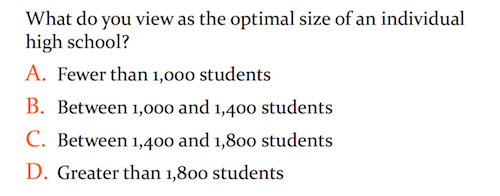
The votes were eight people voting 1000-1400, one at fewer than 1000, and one abstention.
Presentation and discussion of possible solutions
Sage presented four options that included some combination of additions to existing high schools, redistricting, and magnets, with a discussion of ideal school size mixed into it. This will apply to the entire county and likely impact every high school in some way.
This plan would improve mostly the popular schools of choice where people with kids are currently choosing to live. If Baltimore County favors the popular schools of choice, where is the equity in this solution? What happens to the educational quality at these resulting larger schools? Can the properties sustain larger capacity? What happens if they open overcrowded because they remain popular and projections are wrong?
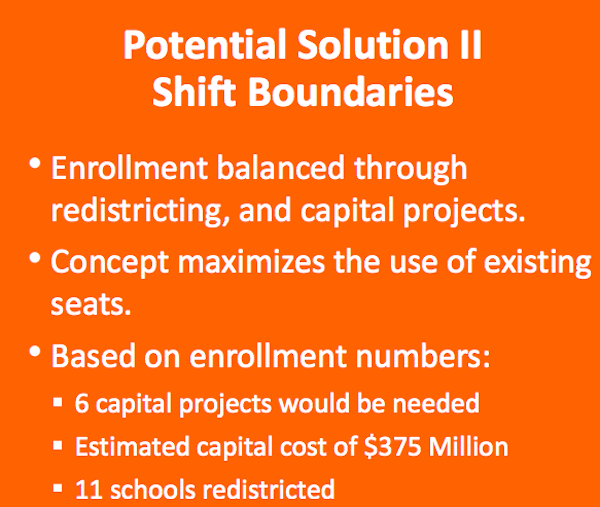
The one school that would be problematic to get to capacity was Randallstown (unclear why).
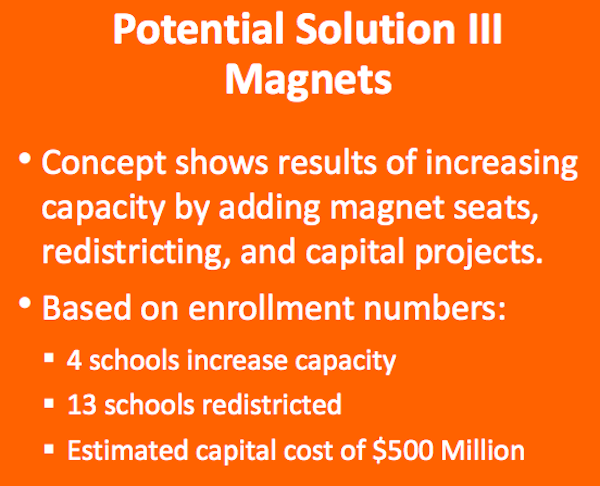
This would try to rebalance enrollment by adding a greater quantity of magnet programs to schools that are currently undercapacity, assuming more voluntary movements within schools. It would involve four schools increasing capacity through building additional seats, 13 schools redistricted, and cost $500 million in capital costs. Higher operating costs of magnet programs were not factored in to this solution for the purpose of this study. Higher transportation costs were also a concern.
There was a question of whether this would democratize magnets by spreading the choices around more. This would only work if people actually choose to attend magnet schools outside their district school. This would be expensive because magnets require changes to schools’ physical plans to support specialized programs. There was discussion of the need for magnets to serve kids who were not college bound but wanted vo-tech skills for jobs in trades.
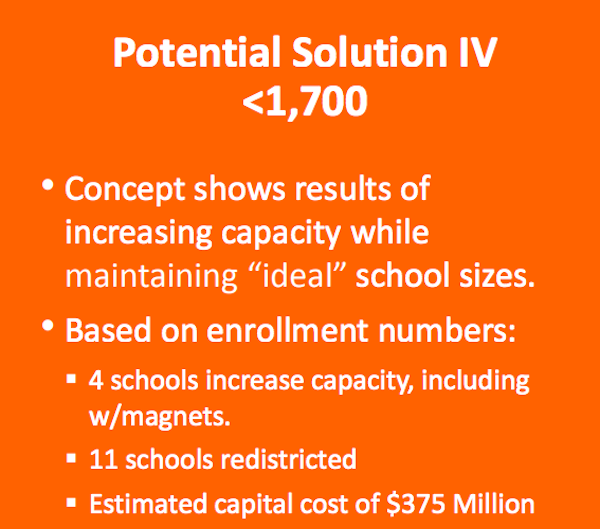
The Ideal Size option is based on the Maryland State Department of Education recommended optimal school size of less than 1,700 students at high school. In this option, no school additions would result in a school with more than 1,700 students, although existing schools with capacity above 1,700 would remain over 1,700. I asked about how the ideal size/capacity would be determined for specific smaller-acreage schools like the 27 acre Towson High and other small properties that may not even be able to accommodate 1,700, but did not get an answer. Details may be included at the gallery walk presentation.
Discussion of options
For all options, details would be presented at the gallery sessions and online and include school specific data that was not presented at focus groups. Pay attention to these details and differences between the options and ask questions.
In general, the room seemed more favorable to the ideal school size approach with an improvement in the magnet options, with an eye toward building more vo-tech options and concerns about equity.
One option that was not presented but that I raised was the possibility of the County buying land to build a new 1,700 seat school and also redistricting to balance school population to meet capacity. Basu said he had not considered that option. He didn’t think land was available or seem to want to speculate on factoring in the land acquisition costs as a budgeted capital expense. He speculated that the central northeast corridor experiencing the most overcrowding was the area that would need to be explored for land options. I mentioned that Sen. Jim Brochin had suggested to a meeting of parents concerned about Towson High that he felt there could be available land out there that hadn’t been considered for purchase under the current administration.
A participant raised a concern that these solutions weren’t really addressing the need for a 10 year plan. That this is just political stalling and business as usual where the purse strings are tightly controlled by same old boys in power resulting in a too-conservative approach that was not visionary or creative.
The group expressed a desire to not have a redistricting result that was gerrymandered schools and concern about politics inserting itself into this process.
The participants expressed concern about whether the magnets as capacity solution really address the issue of the quality of education being offered. It was just about seats.
Another concern was the high cost of construction in Baltimore County, could anything be done to address that? It was also noted that construction costs were only going to go up, especially in an economy facing high material cost with steel tariffs. Participants asked if any savings were projected from future innovations in school construction and school design (not really).
Safety issues and school security were also a concern that was not addressed in these capacity solutions.
Transportation problems were a concern, with a desire to look holistically at the county’s transportation system and the impact on capacity. The lack of equity in transportation is a barrier to access to magnet programs if existing transportation networks are lacking and families don’t have the ability to get kids to magnet schools themselves. Does the county need to address transportation equity issues at the same time as it addresses capacity needs?
My Reflections
I did feel like BCPS was making some effort to engage the public in the focus groups and the July and September community feedback periods.
I’d like to see more options being discussed than what was presented at the focus group. I’ve heard many more creative options suggested in other venues. If you have a creative idea, please speak up. I felt like Sage and Anirban Basu had limited the options being presented based on an aversion both to imposing developer impact fees and to Baltimore County purchasing new land to build an entirely new high school. There was very little creativity, vision, or imagination in the plans presented. The four solutions presented seemed to be a reaction to conservative enrollment projection data that keeps growing larger each year. They were also limited in not addressing the quality of the educational program or school safety. This does not get us to a proactive 10-year plan.
This is my advice if you have high school age kids:
Those going into 11th or 12th grade aren’t going to experience as much disruption as younger grades because they will graduate before much can happen. If your kids are about to start high school or will be in middle school next year, pay close attention to this because your kids may face redistricting, construction, and changes in the magnet programs over the next five years. If your kids will experience that kind of disruption, it better be worth it. If your kids are elementary aged, pay attention because these changes will shape the size, location and magnet educational offerings of the high school your child may attend. If you are about to buy a house in Baltimore County, don’t assume school districts will remain the same.
An earlier version of this story said the county council cut the $30 million that Kevin Kamenetz had set aside for planning two new high schools. While the council president, Julian Jones, did say the money should be spent elsewhere, it was not, in fact, cut from the budget. The Flyer regrets the error.
-Kris Henry,
The Towson Flyer

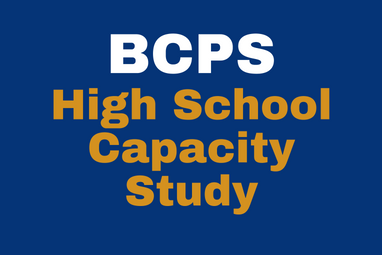
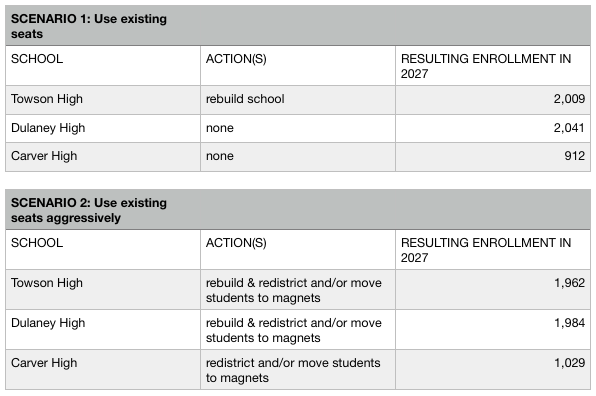
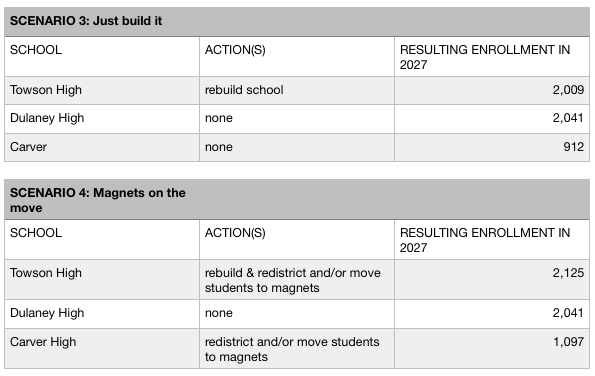
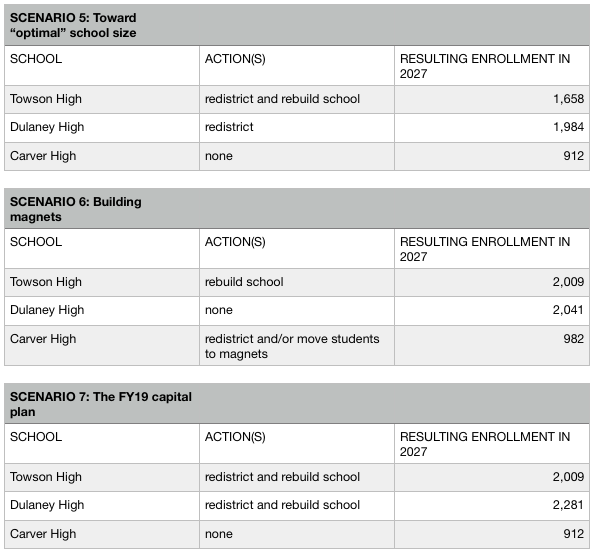
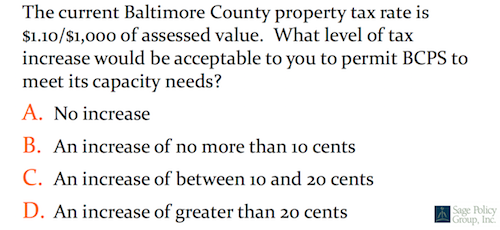
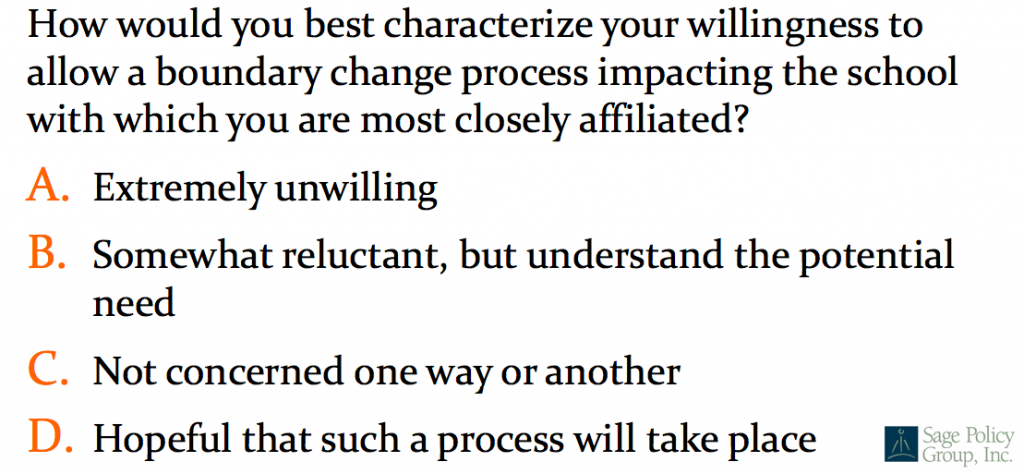
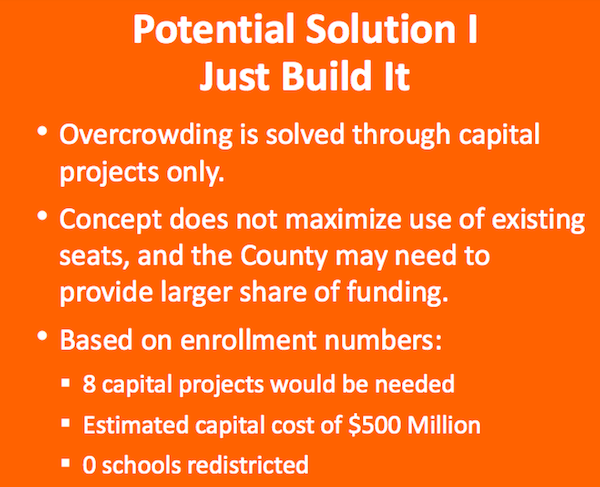
Personally, I would annex the Sudatenland.
Excellent commentary and insights from Phoebe. Thank you.